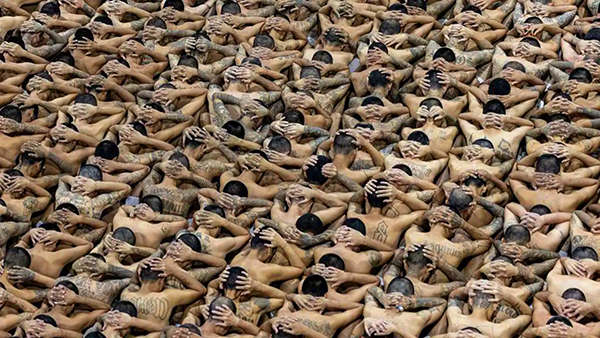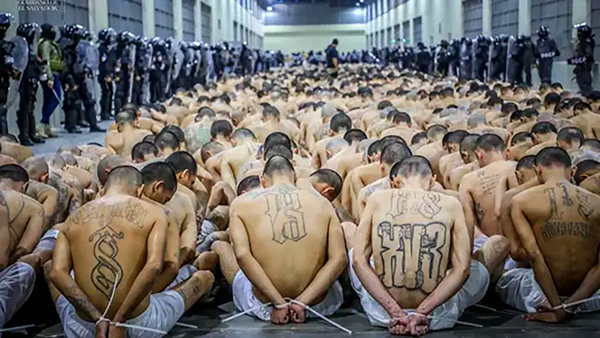

|
|
 |
 |
 |
|
April 30 – May 2, 2025 Marti Eicholz While waiting in Belfast for our ship to sail, Gian and Angie met. May 1st this amazing couple tied the knot, our first resident wedding on The Odyssey. Congratulations Gian & Angie! The gateway into El Salvador is Acajutla, a perfect introduction to the natural landscapes, beautiful green forestry, and history of El Salvador. White sand beaches. Notorious dormant volcanoes. Coffee Plantations. Maya archaeological sites at Tazumai, a pre-Columbian site, an important Maya settlement for thousands of years BC. Around the year 1200 AD became abandoned. This small Pacific coast town of Acajutla in Western El Salvador was a significant colonial port, with Spanish conquistadors defeating the Indigenous people in 1524. The town grew from a small settlement into the country’s main industrial port, standing as a vital gateway for regional and international trade, a maritime harbor, a deep-water port, hosting container ships and petroleum ships serving the city's petroleum refinery. Acajutla manages El Salvador’s coffee, sugar, and balsam exports. Artisanal Fisherman's Wharf, a pier for local fishing boats, amazing sunsets, ocean views, and a colony of hundreds of raccoons, occupying the crevices in the rocky pier foundation. Dive boats are available for scuba diving in waters up to ninety-eight feet. Walk along the pier, watch the ships come and go, and enjoy the beautiful ocean views. Acajutla, an active municipality with a population of approximately 53,000 people, is known for its beautiful beaches with calmer waters than most Pacific coast beaches in Central America, vibrant culture, and delicious seafood. We arrive in Acajutla, El Salvador at the end of the best time to visit Acajutla, during the dry season (November to April) when you can enjoy sunny days, minimal rainfall, making it perfect for beach activities and exploring the city. Beginning in the month of May, there are fewer crowds, lower prices, consistent waves and bigger swells for a surfing enthusiast. Sounds like perfect timing, but we are aware that weather patterns can vary. As any surfer knows, waves are what they are all about. The thing that makes surfing such a challenge is that every wave is different. Identifying the type of wave you are surfing, helps to predict how the wave will react, where to find a “safe” zone, and which type of wave is best for your ability. The various beaches of Acajutla help you identify and discover what types of waves are out there. Beach Acajutla, called “Puerto,” Pier, faces to the east of the Salvadoran coast and not south like most of the country's beaches, is less exposed to the tides, coming from the South Pacific Ocean. Therefore, the waves in Acajutla are not as powerful or big.
Next to the industrial pier, heading east, you will find the beach, Las
Flores with a gentle and friendly wave, breaking right, a true magnet
attracting lovers of longboards. It is only functional at high tide
because its rocky bottom at low and mid tides becomes dangerously
exposed. This stretch of beach at the mouth of a mangrove-lined river is
a good spot for birding. One of the most beautiful excursions you can make in El Salvador is a route running from Sonsonate to Ahuachapan. "The Ruta de las Flores ", a series of interconnected towns, a beautiful area in the western part of the country, offers a mix of culture, history, and natural beauty. It is known for picturesque villages where you can explore the Salvadorean daily life, Indigenous traditions, mountains cultivated by coffee, traditional crafts, and colonial architecture. Explore this “flower” route of small historic villages with flowers, murals, markets, nice shops, coffee fields, waterfalls, sample the unique gastronomic local cuisine, learn about the region’s history, and admire the landscapes. Take the tour, Tazumal Maya Ruins, Casablanca and Santa Ana, and see the beauty of the mountains, learn about the Maya and colonial past of El Salvador. Drive through the mountains where the best coffee of El Salvador is harvested. For nature lovers, visit El Imposible National Park, meaning “The Impossible National Park,” known for diverse flora, fauna, and challenging terrain, an extraordinary mix. It offers stunning views, hiking trails, and the opportunity to see diverse wildlife in their natural habitat, sightings of creatures like eagles, hawks, boars, and pumas. For a touch of history and culture, visit Iglesia San Jeronimo, a historic church in Acajutla. The current parish and adjoining cloister are the only remains of the monastery of Hieronymite monks, erected in 1505 and no longer in existence. Visit Los Cobanos, a small coastal fishing community about seven miles east of Acajutla, known for beautiful breathtaking beaches with sand a color like honey, calm waters, marine life, coral reefs, .and rock formations that stand out throughout the coast. The beach, a marine ecosystem, is rich in natural diversity and long stretches environmentally protected, especially mangroves and small patches of native dry tropical forest make for decent birding. Surfing is not popular here. The fringing reef creates a water break, causing a large area of confined water, protecting it from powerful waves, but creating a place to snorkel in the ocean. Truly beautiful and unique. The Los Cóbanos area is a long stretch of protected marine environments, mangroves, small patches for nesting sea turtles, and native dry tropical forest for birding. Explore a maze of volcanoes. El Salvador is home to over one hundred volcanoes. Volcan Izalco is famously known as the “Lighthouse of the Pacific,” erupting from 1770 to 1958, flames and lava, flowing for miles out to sea. No eruptions since 1966. Now you can climb the volcano. After a busy day in Acajutla, we breathe, relax and enjoy a live performance by local musicians. The Odyssey sets sail toward our next port, Puerto Quetzal, Guatemala. |
|
Copyright © 2025 All rights reserved |